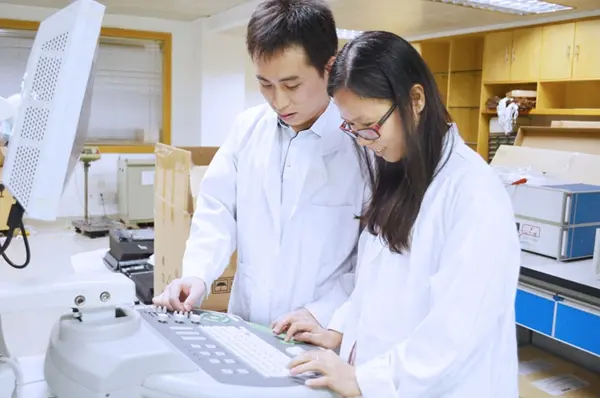
Cytotoxicity Analysis (CCK-8 Method)
Cytotoxicity refers to cell damage events caused by cells or cheMICal substances that are not dependent on the mechanisms of apoptosis or necrosis. Common cytotoxicity detection methods include the CCK-8 method, MTT method, and LDH method.
CompaRED to the MTT Method:
- (1) CCK-8 is more convenient to use, as it does not require washing the cells.
- (2) CCK-8 provides rapid detection.
- (3) CCK-8 has a wider linear detection range and higher sensitivity.
- (4) CCK-8 shows better reproducibility.
- (5) CCK-8 has minimal toxicity to cells, allowing the cells to maintain their original state.
- (6) CCK-8 reagents are more expensive.

Compared to the LDH Method:
- (1) CCK-8 is added directly to the cells, while LDH detection is based on the cell supernatant, allowing the cells to be used for other experiments.
- (2) LDH allows for high-throughput detection.
Principle
Using the CCK-8 method as an example, the principle is as follows: The CCK-8 reagent contains water-soluble tetrazolium salt WST-8 (chemical name: 2-(2-methoxy-4-nitrophenyl)-3-(4-nitrophenyl)-5-(2,4-disULfonicphenyl)-2H-tetrazolium monosodium salt). In the presence of the electron carrier 1-Methoxy PMS, dehydrogenase enzymes in the mitochondria of living cells catalyze WST-8 to form highly water-soluble orange-yellow formazan dye. The amount of formazan dye generated is linearly related to the number of living cells.
Applications
1. Drug screening experiments
2. Tumor drug sensitivity tests
3. Bioactivity factor activity detection
4. Cell proliferation assays, etc.
Materials and Equipment
Materials: Cell suspension, compound solution, CCK-8 reagent, complete culture medium, PBS, 0.25% Trypsin-EDTA.
Equipment and Consumables: 96-well plate, CO2 incubator, enzyme marker for detection wavelength 450-490nm.
Procedure
1. Determine the seeding density of cells in the 96-well plate according to the specific cell type, referencing the control group where cell density REACHes 70%-90% by the time of detection. Set 3-6 replicates per group, leaving the outer wells empty and adding an equal volume of sterile PBS solution as the culture medium.
2. Add CCK-8 solution at 1/10 of the culture medium volume to each well. If the starting culture volume is 200 µL, then 20 µL of CCK-8 solution should be added, and similarly for other conditions. Also, include wells with the same volume of cell culture medium and CCK-8 solution but without cells as a blank control. If the drug being used may interfere with the results, use wells with equal volumes of cell culture medium, drug, and CCK-8 solution but no cells as a blank control (ensure no bubbles are formed).
3. Continue incubation in the cell incubator for 2-4 hours. It is recommended to check absorbance at 2, 3, and 4 hours using the enzyme marker, and select the time point with the most appropriate absorbance for subsequent experiments.
4. Measure absorbance at 450 nm. If a 450 nm filter is unavailable, use a 420-480 nm filter. A wavelength greater than 600 nm, such as 650 nm, can be used as a reference wavelength for dual-wavelength measurements.
Precautions
1. This experiment uses a 96-well plate for detection. The outermost wells are most prone to evaporation, which may lead to inaccurate volume and increased error, so they should be discarded. Add equal volumes of PBS, water, or culture medium to these wells.
2. This reagent relies on dehydrogenase-catalyzed reactions, so reducing agents (e.g., some antioxidants) may interfere with detection. If there are many reducing agents in the test system, they should be removed.
3. Ensure there are no bubbles in each well before measuring with the enzyme marker, as bubbles may interfere with the measurement.
4. Phenol red and serum will not interfere with the CCK-8 method and can be eliminated by subtracting the background absorbance from blank wells.
5. Reagents have some toxicity; please wear a lab coat and disposable gloves during operation.
6. Reagents should be stored in the dark at 4°C or -20°C.
Common Problems
1. If the cells grow slowly and are small, a maximum seeding density of 1x10⁴ cells/well is recommended, but the treatment time after adding compounds should not exceed 72 hours.
2. If the compound is difficult to dissolve in water, appropriate amounts of DMSO or DMF can be added to the culture medium to assist in dissolution, but the maximum concentration should not exceed 0.5%, as DMSO and DMF have some toxicity to cells. If using DMSO or DMF, ensure that the concentration of these solvents is the same in other compound concentrations.
3. If the absorbance value is too low, what should be done?
1) Increase the number of cells.
2) Extend the incubation time after adding the CCK-8 solution.
China's JJR Laboratory provides medical device cytotoxicity testing based on the ISO 10993 standard. Feel free to consult us.
Email:hello@jjrlab.com
Write your message here and send it to us
 What Are the Testing Items of California Propositi
What Are the Testing Items of California Propositi
 E-Cigarette EU TPD Testing
E-Cigarette EU TPD Testing
 Testing Certification for E-cigarettes Exported to
Testing Certification for E-cigarettes Exported to
 What is Amazon US CPC Certification?
What is Amazon US CPC Certification?
 UK Toy Safety Regulation Standard EN 71-13
UK Toy Safety Regulation Standard EN 71-13
 What is EU UFI Registration?
What is EU UFI Registration?
 EU UFI Registration for E-cigarette E-liquid
EU UFI Registration for E-cigarette E-liquid
 How to get the MSDS Report for Electronic Cigarett
How to get the MSDS Report for Electronic Cigarett
Leave us a message
24-hour online customer service at any time to respond, so that you worry!




